Dream flowers
The world’s most romantic bloom deserves a spot in every garden. In November, they really come into their own as beautiful garden plants, and you can see them in full bloom in garden centres now. This makes choosing a new treasure so much easier and more tempting. Whether you want to grow a single variety for picking, or make them your main event, there is always a way to make room for roses.
How to grow more roses in less space:
Create layers
Standard roses add instant height and accent, and, unlike trees, they don’t keep getting taller. Underneath they can be planted with low growing flowers, herbs or even vegetables.
Blended borders
Roses don’t have to have their own formal space. They can be combined with other plants in a mixed planting scheme.
Go vertical
Every sunny wall, fence, pergola or post is an opportunity to grow a rose. Rambling roses will even grow up trees. Train a tall shrub or climbing rose up a post or build your own rose obelisk. In winter, an obelisk becomes a feature in its own right, adding vertical accent without taking up too much space.
Roses in containers
Some roses are specifically bred for tubs and pots. Generally known as patio roses, these varieties are compact and repeat flowering with an abundance of blooms that belies their size. Any bush rose can be grown in a container with regular feeding and watering. The larger the pot, the less likely it is to run out of water or food too quickly.
Prioritise
With countless roses to choose from and new cultivars cropping up every single year, no garden has space for every beautiful rose on offer. Passionate plant lovers often find it difficult to throw away anything with life left in it, but saying goodbye to a poor performer frees up space for something better. When it comes to roses we have to be selective and plant the varieties that best fit our needs. Disease resistant roses minimise the need for spraying. Some rose varieties produce significantly more flowers or flower for longer than others. While all roses have some scent, some are more potently perfumed than others.
Tip: When replacing a sick or weak rose remove a barrow load of soil and replace it with fresh soil from another part of the garden, mixed with compost.
New Zealand’s Favourite Roses
Choosing a rose via name, photograph or an impulsive moment in the garden centre can lead to some exciting rose discoveries. For those who prefer a less hit-and-miss approach a little more research comes in handy. Or ask an experienced rosarian. An annual survey carried out by the New Zealand Rose Society (published in the New Zealand Rose Review) reveals some old favourites can be hard to beat.
Picking roses
Hybrid tea roses are the ones to plant if you want to grow large classic shaped blooms on long stems that last well in the vase. Paddy Stephens has been the Rose Society’s number one hybrid tea rose for 14 years in a row. It was also voted the healthiest rose. Paddy Stevens is a descendant of Peace, arguably the worlds most famous rose. Second place among hybrid teas went to Hamilton Gardens, a sport of Paddy Stevens.
Other favourite hybrid teas are Solitaire, Glorious, Auckland Metro (cream), Loving Memory, Elina, Nelson Girls, Joan Monica and Snow Queen.
Fragrant roses
If planting just one rose for picking, it makes sense to make it one with a lovely fragrance. While all roses have perfume, some are far more fragrant than others. Margaret Merril has been a Rose Society favourite for many years. Other leading roses notable for their perfume are Double Delight, Aotearoa, and Papa Meilland.
Showy roses
The floribunda roses are a class of small to medium rose bushes that produce flowers in large trusses (rather than singly on a long stem), which provides a voluminous mass of colour. The best are repeat flowering with healthy vigorous growth. Raspberry Ice has been the Rose Society’s favourite for many years, followed by newer varieties My Mum and Absolutely Fabulous.
White roses
Ubiquitous stalwart Iceberg is a much loved 1950s rose that’s been a world favourite for decades, and has dropped out of the NZ Rose Society’s top ten for the first time. Perhaps suffering from over exposure, Iceberg has been overtaken in Rose Society favour by more fragrant floribunda roses White Romance and Margaret Merrill.
Modern shrubs
Large shrubby growth with loads of bloom, these easy care roses are worth finding space for. This class of roses includes the ever popular David Austin or ‘English’ roses. Beloved yellow Austin rose Graham Thomas was in second place this year, pipped at the post by persistent number one shrub rose, Sally Holmes.
Climbing roses
Red rose Dublin Bay has held the number one position for over 30 years, closely rivalled by fragrant pink climber, Compassion. When choosing climbing roses, also look to the old fashioned ‘Heritage’ roses. Diminutive pink Cecile Brunner and fragrant rambler, Madame Alfred Carriere feature in the Rose Society’s top ten.
Read more about this season’s winners in the latest New Zealand Rose Review. www.nzroses.org.nz
Rose Basics
Where to plant
Roses grow best with plenty of sun. They also need some air movement to minimise pests and diseases. The best soil for roses holds plenty of moisture and nutrients, which means a clay-based soil can be a good thing. Soil that is too light (sandy) or very heavy (clay) can be improved by adding compost.
Planting
Many of the roses sold in winter are known as ‘bare-root’ roses. This means they have been grown in the open ground and then dug up for winter planting. The roots are wrapped with protective packing or planted into pots before being transported to the garden centre. Often, barefoot roses are transferred to pots once they reach the garden centre. When planting bare-root roses in winter, remove the wrapping plus any packaging material surrounding the roots. Soak the roots in a bucket of water for an hour or two before planting.
When planting pot grown roses in spring: carefully remove the container, leaving the new root growth as intact as possible. Dig a generous planting hole large enough to fit the roots without forcing them. Add controlled-release rose fertiliser or sheep pellets to the hole. Sit the plant in the hole so that the roots are growing downwards and the crown or bud union (the place were the shoots grow from the main stem) sits above ground level. Fill the hole with soil and tread firmly. Water thoroughly.
Pruning
July is pruning time for most bush roses, but wait until August in coldest climates. Using a clean, sharp pair of secateurs, remove dead or decaying wood first. Remove old unproductive wood, branches crossing over each other or crowding the centre of the bush. Make cuts about 5mm above a bud slanting away from the bud. This is where the new growth will sprout in spring. Keep this in mind when selecting your buds. Find out more about rose pruning at www.gogardening.co.nz and be assured, it’s hard to kill a rose by pruning it!
Winter clean up
Fallen rose leaves provide a perfect refuge for overwintering pests and diseases, so clearing them away is one of the best ways you can reduce infection in spring. After pruning, clear away all leaf debris and surrounding weeds which provide a refuge for the perpetrators of next summers pests and diseases. Spray after pruning with a copper spray mixed with spraying oil. The oil takes care of insect eggs and overwintering adults, while the copper kills disease spores.
4-Nov-2021
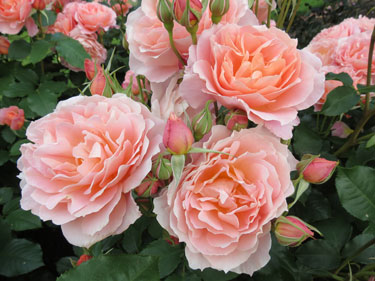
Rose My Mum
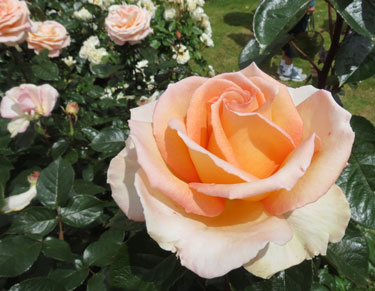
Rose Hamilton Gardens
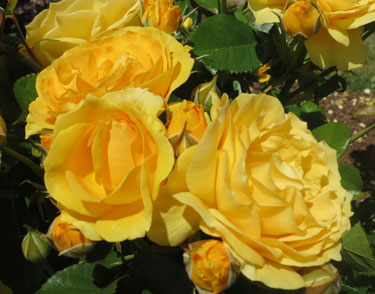
Rose Absolutely Fabulous
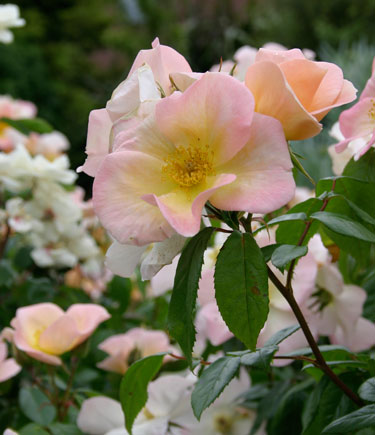
Rose Sally Holmes
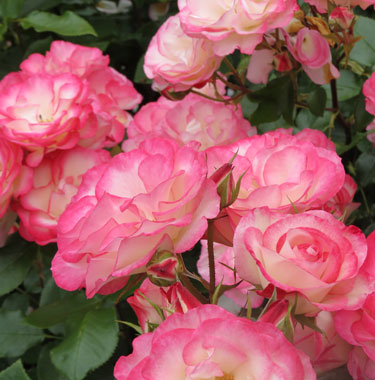
Rose Raspberry Ice
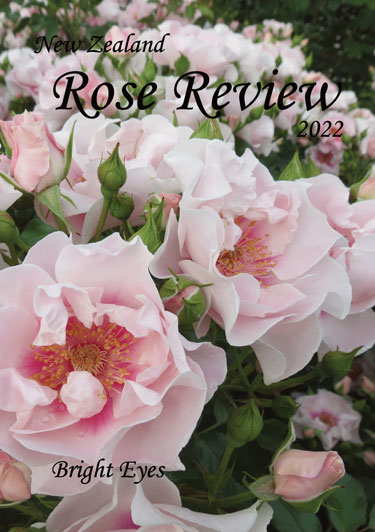
Rose Review 2022, available November 2021
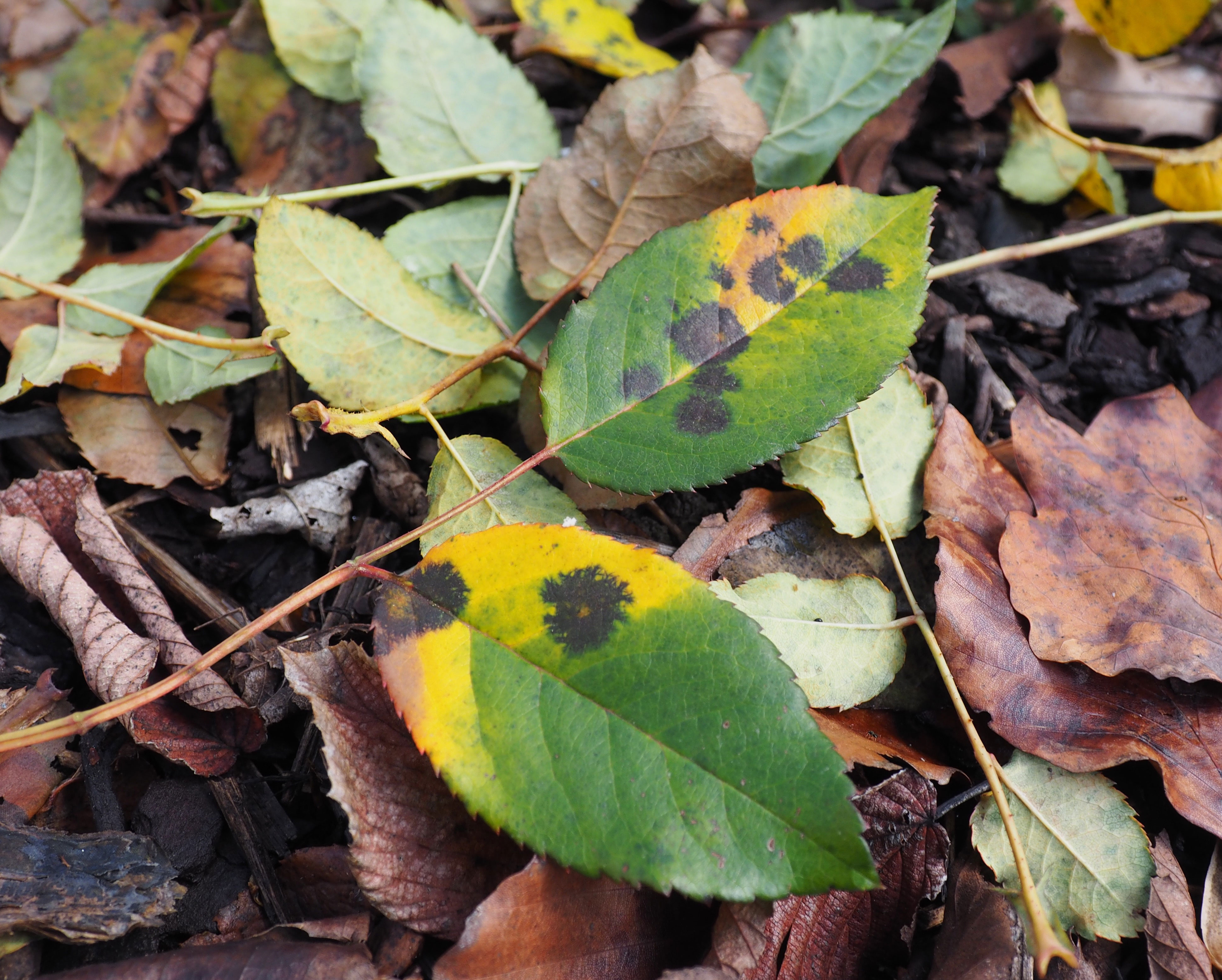
Black spot & rust on rose leaves
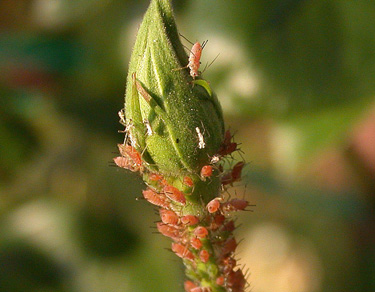
Aphids on rose buds

